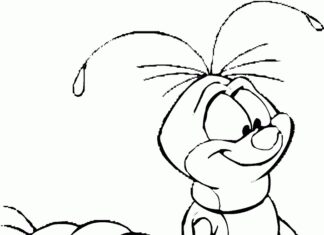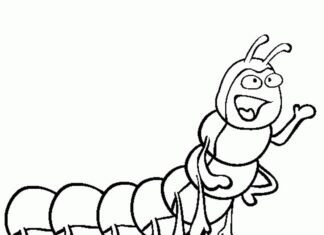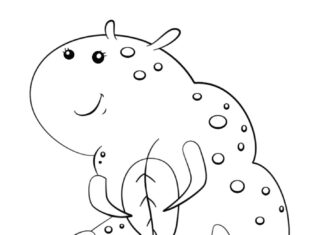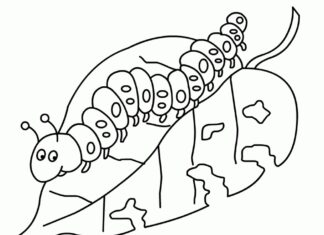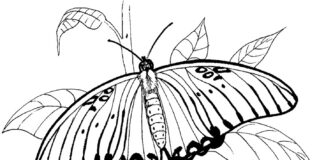Caterpillars are the developmental stage of some insects, especially butterflies and butterflies. They represent one of the transitional stages in the life cycle of these insects.
Coloring Book Caterpillar
information
- Body structure: Caterpillars have a long, cylindrical body divided into segments. Each segment may have even pairs of legs that allow them to move and attach to plants.
- Food and diet: Caterpillars are usually herbivorous and feed on leaves, flowers and other plant parts. However, some species of caterpillars are predators and eat other insects.
- Body shield: The body of a caterpillar is usually covered with soft, often colorful scales or hairs. Some caterpillars may have spines or other defensive structures.
- Development: Caterpillars are a developmental stage where intensive growth occurs. Caterpillars eat a lot to store energy for the next stage of their life.
- Transformation: After the caterpillar stage, there is a transformation to the pupa or beetle stage. This stage is referred to as the pupa or skull. During this process, body remodeling occurs and the transformation from a caterpillar to an adult insect takes place.
- Ecological significance: Caterpillars play an important role in ecosystems. They are often food for birds, predatory insects and other animals. Many species of caterpillars also serve as pollinators of plants.
- Mimicry: Some caterpillars have developed the ability of mimicry, meaning that their appearance or behavior mimics other organisms or elements of the environment. This is a defense mechanism against predators.
- Diversity of species: There is a huge variety of caterpillar species with different shapes, sizes and colors. Some of them are very distinctive and easy to recognize.
- Interactions with plants: Caterpillars can affect the plants on which they feed. Some caterpillars can cause damage to plants, while others can trigger plant defense responses, such as the production of poisonous or protective substances.
trivia
- Variety of shapes and colors: Caterpillars come in a huge variety of shapes, sizes and colors. Some are brightly colored to warn predators of their toxicity, while others are perfectly hidden among plants.
- Ant guard caterpillars: Some caterpillars develop symbiotic relationships with ants. These caterpillars secrete nutrients that attract ants. In return, the ants protect the caterpillars from predators.
- Addiction to certain plants: Many species of caterpillars are highly specialized in their food preferences. This means that they eat only one or a small number of plant species.
- Ghosts of caterpillars: Some species of caterpillars, such as October caterpillars, have a distinctive form of protection. They consist of warts, outgrowths and spines that make them resemble wooden twigs or pieces of bark.
- Caterpillar house builders: Some caterpillars, instead of living in open foliage, construct small "houses" for themselves from combined leaves, silk and other materials. This helps them hide and protect themselves from predators.
- Mimicry patterns: Patterns on the body of some caterpillars can mimic eyes or other features that distract predators from their more sensitive body parts.
- Differences in behavior: Some caterpillars are active and mobile, while others are more lazy and slow to move. Their behavior can be adapted to the environment in which they live.
- Toxiczność: Some caterpillars have developed the ability to produce poisonous substances that repel predators. The sensation of touching such a caterpillar can be painful for humans or cause allergic reactions.
- External transformation: During the process of pupation, the caterpillar sheds its outer skin and shows the pupa underneath. This is a unique phenomenon in the insect world.
- Impact on research: Caterpillars have been and continue to be the subject of scientific research in fields such as evolutionary biology, ecology, behavior and chemistry, helping to better understand many aspects of nature.

